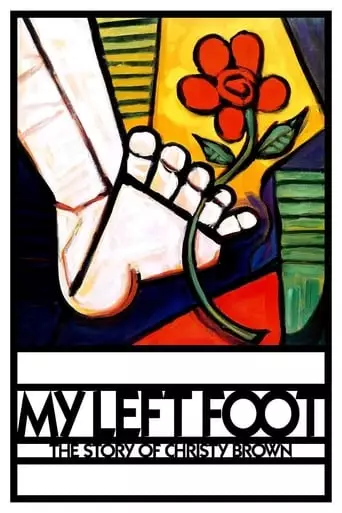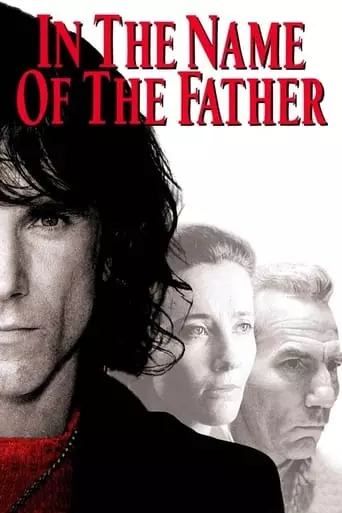The hidden memoir of an elderly woman confined to a mental hospital reveals the history of her passionate yet tortured life, and of the religious and political upheavals in Ireland […]

The hidden memoir of an elderly woman confined to a mental hospital reveals the history of her passionate yet tortured life, and of the religious and political upheavals in Ireland […]

Nineteen-year-old Danny Flynn is imprisoned for his involvement with the I.R.A. in Belfast. He leaves behind his family and his sixteen-year-old girlfriend, Maggie Hamill. Fourteen years later, Danny is released […]

No one expects much from Christy Brown, a boy with cerebral palsy born into a working-class Irish family. Though Christy is a spastic quadriplegic and essentially paralyzed, a miraculous event […]

A family of Irish immigrants adjusts to life on the mean streets of Hell’s Kitchen while also grieving the death of a child.

A small time thief from Belfast, Gerry Conlon, is falsely implicated in the IRA bombing of a pub that kills several people while he is in London. He and his […]

When his helicopter goes down during his fourth tour of duty in Afghanistan, Marine Sam Cahill is presumed dead. Back home, brother Tommy steps in to look over Sam’s wife, […]

Publisher Will Atenton quits a lucrative job in New York to relocate his wife, Libby, and their daughters to a quaint town in New England. However, as they settle into […]
Jim Sheridan: The Storyteller of Irish Cinema
Jim Sheridan, a masterful Irish filmmaker, has long been celebrated for his ability to craft deeply personal and evocative stories that resonate across cultural and national boundaries. With a career spanning decades, Sheridan’s work explores themes of family, identity, resilience, and the complexities of the human condition. From his debut in the late 1980s to his continued contributions to cinema, Sheridan has become synonymous with Irish storytelling on the global stage.
Early Life and Career Beginnings
Born on February 6, 1949, in Dublin, Ireland, Sheridan grew up in a working-class family, experiences that would later shape his storytelling. After studying English at University College Dublin, he delved into theater, co-founding the Project Arts Centre in Dublin, which became a hub for avant-garde performances.
In the early 1980s, Sheridan moved to New York, where he studied at the American Academy of Dramatic Arts. This period in the United States exposed him to diverse cultural influences, enriching his perspective as a filmmaker. He eventually returned to Ireland, eager to bring stories from his homeland to life on the big screen.
Breakthrough with My Left Foot
Sheridan’s debut film, My Left Foot (1989), catapulted him to international acclaim. The biographical drama tells the story of Christy Brown, an Irishman born with cerebral palsy who defies the odds to become a celebrated writer and artist. Starring Daniel Day-Lewis in a career-defining role, the film was both a critical and commercial success, earning two Academy Awards (Best Actor for Day-Lewis and Best Supporting Actress for Brenda Fricker).
The film’s raw emotional honesty, coupled with Sheridan’s sensitive direction, set the tone for his career. It also established his reputation for eliciting remarkable performances from his actors.
Celebrating Irish Identity
Throughout his filmography, Sheridan has maintained a deep connection to his Irish roots, often addressing historical and sociopolitical issues. In The Field (1990), he explored themes of land ownership and tradition in rural Ireland, with Richard Harris delivering a powerful performance as a farmer obsessed with preserving his ancestral land.
Sheridan further cemented his legacy with In the Name of the Father (1993), a harrowing depiction of the wrongful imprisonment of the Guildford Four, a group of Irish individuals falsely accused of bombing a pub during the Troubles. Starring Daniel Day-Lewis and Emma Thompson, the film was a critical triumph, earning seven Academy Award nominations.
His 1997 film The Boxer, another collaboration with Day-Lewis, delved into the challenges of reconciliation in Northern Ireland, showcasing Sheridan’s talent for balancing personal drama with political commentary.
A Shift Toward Personal Storytelling
In the 2000s, Sheridan turned to more intimate, autobiographical narratives. In America (2003) drew heavily from his own experiences as an immigrant in New York, following an Irish family’s struggles and triumphs as they build a new life in America. The film was widely praised for its heartfelt performances and poignant storytelling, earning three Academy Award nominations.
Forays into Diverse Genres
Sheridan has also ventured beyond Irish-centric themes, directing films such as Get Rich or Die Tryin’ (2005), a semi-autobiographical drama about rapper 50 Cent, and Brothers (2009), a remake of a Danish film exploring the psychological toll of war on a family. While these films received mixed reviews, they demonstrated Sheridan’s versatility and willingness to experiment with different narratives and styles.
Legacy and Influence
Jim Sheridan’s work is characterized by its deep empathy, meticulous attention to character detail, and profound storytelling. His ability to humanize complex issues, from disability to political strife, has made his films timeless.
As a filmmaker, Sheridan has also championed Irish cinema, mentoring emerging talent and contributing to Ireland’s reputation as a hub for compelling storytelling. His films have not only entertained audiences worldwide but also provided a lens through which global viewers can better understand Ireland’s culture, history, and people.
Conclusion
Jim Sheridan remains one of the most respected voices in contemporary cinema. Whether chronicling the struggles of an individual against societal forces or exploring the bonds of family and community, his films are marked by their emotional authenticity and universal appeal. As a filmmaker and storyteller, Sheridan’s contributions continue to enrich the world of cinema, ensuring his legacy for generations to come.